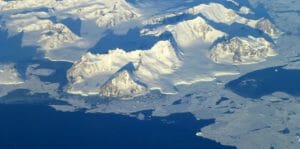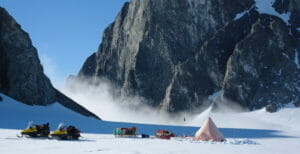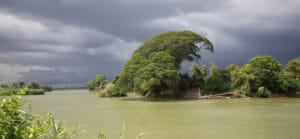Poles Apart: Sea Ice Melts—and Grows
The Antarctic ice sheet continues to grow slightly, while Arctic sea ice is still melting fast. Scientists think climate change can explain both phenomena.
By Alex Kirby, Climate News NetworkThis piece first appeared at Climate News Network.
LONDON — It’s one of the most closely-watched questions in climate science: how fast is the Arctic sea ice melting?
The definitive answer is that it is still melting rapidly, though not quite as fast it did in 2012, when the extent of the ice sheet was lower than ever recorded.
At the other end of the world, though, the Antarctic ice sheet has continued to grow, reaching a new record extent. Some experts believe this is the result not of cooling but of stronger polar winds pushing the ice further outward from the pole.
Others have suggested that increased fresh water from summer icecap melting means the sea ice can form at a higher temperature in winter since the salt water is diluted.
The details are published by the US National Snow and Ice Data Center (NSIDC), based at the University of Colorado Boulder, in Arctic Sea Ice News and Analysis.
This September, sea ice covering the Arctic Ocean fell to its sixth lowest extent in the satellite record, which dates from 1979. All of the seven lowest extents have occurred in the last seven years. The NSIDC says cooler conditions in the Arctic this summer helped to retain more sea ice.
Satellite data analysed by NSIDC scientists shows the sea ice cover at its lowest extent on 13 September. Averaging the extent for the whole of September also showed it to be the sixth lowest in the satellite record.
Julienne Stroeve, an NSIDC scientist, says: “A relatively cool and stormy summer helped slow ice loss compared to the last few summers. This summer’s extent highlights the complex interaction between natural climate variability and long-term thinning of the ice cover.”
Mark Serreze, the director of the NSIDC, said: “For Earth’s ice and snow cover taken as a whole, this year has been a bit of a bright spot within a long-term sobering trend.”
Thinning ice
But the Arctic sea ice continues to be thinner than in past years, as confirmed both by direct satellite observations and estimates of ice age, and so it is more vulnerable to breakup by storms, circulating currents and thawing.
“While Earth’s cryosphere, its snow and ice cover, got a shot of hope this year, it’s likely to be only a short-term boost,” Serreze said.
The NSIDC says that although most of the ice cover now consists of young, thin ice, a pack of multi-year ice (ice that has survived more than one melt season and is thicker than first-year ice) remains in the central Arctic.
At its lowest point this year on 13 September sea ice extent dropped to 5.10 million square kilometers (1.97 million square miles). September ice extent was 1.17 million sq km (452,000 sq m) below the 1981 to 2010 average.
This summer’s low ice extent continues the downward trend seen since 1979, with September sea ice extent declining by 13.7% per decade. Summer sea ice extent is important because, among other things, it reflects sunlight, keeping the Arctic region cool and tempering global climate.
As well as declining in extent the ice cover has grown thinner and less resistant to summer melt. Recent data on the age of sea ice, which scientists use to estimate the thickness of the ice cover, shows that the youngest, thinnest ice, which has survived only one or two melt seasons, now makes up most of the cover.
But in the Antarctic the sea ice has reached record high levels – a Southern Hemisphere winter maximum extent of 19.47 million sq kms (7.52 million sq m) on 22 September. The September monthly average was also a record high, at 19.77 million sq kms (7.63 million sq m), slightly higher than last year’s previous record.
Antarctic September sea ice has been increasing at 1.1% a decade relative to the 1981 to 2010 average. “The tiny gain in Antarctica’s ice is an interesting puzzle for scientists,” said NSIDC lead scientist Ted Scambos. “The rapid loss of ice in the Arctic should be ringing alarm bells for everyone.”
Your support matters…Independent journalism is under threat and overshadowed by heavily funded mainstream media.
You can help level the playing field. Become a member.
Your tax-deductible contribution keeps us digging beneath the headlines to give you thought-provoking, investigative reporting and analysis that unearths what's really happening- without compromise.
Give today to support our courageous, independent journalists.






You need to be a supporter to comment.
There are currently no responses to this article.
Be the first to respond.